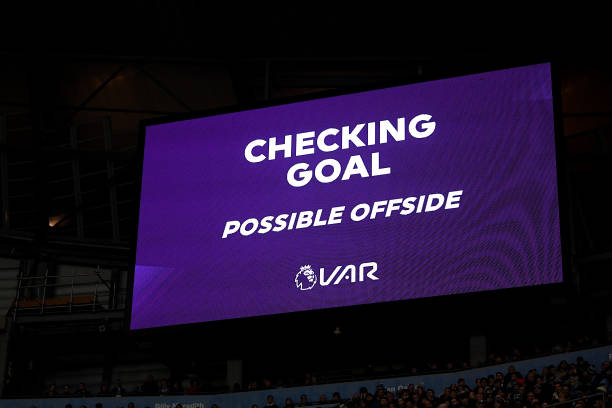The Premier League looks set to push ahead with plans to adopt semi-automated offsides for next season, following its introduction in the Champions League.

The Times report that the Premier League are expected to push ahead with plans to use semi-automated offsides for next season.
The 20 clubs are yet to vote on the decision, and they’ll likely wait until after the World Cup to do so, but its seen as a major improvement on the current system.
As any fan of a Premier League club will be all too aware, the current system involves manually drawing lines on a freezeframe, but the new system uses technology to make the decision instantaneously – before it’s checked and confirmed by a VAR official.
Arsenal are one of the clubs that already have the capability to introduce the new semi-automated offside system, so the Gunners will likely be keen to push forward.
What are semi-automated offsides?

When introduced, 10-12 tracking cameras around each stadium will track the ball and 29 points on each player’s body 50 times per second. When the ball is played, the technology will automatically assess the positions of every player and flag up any in an offside position.
A VAR official will then confirm the decision by checking whether the player in an offside position did attempt to play the ball, or was interfering with play, before giving or ruling out the goal.
Unlike the current system, the new system will only take seconds to flag an offside. That should speed things up significantly and avoid a scenario where fans in the ground are left in the dark for extended periods of time.
The new system will also produce a clear graphic showing the offside, so supporters can confirm it with their own eyes. The current system with freezeframes from difficult-to-understand perspectives often leads to anger on social media.
In order to determine the exact moment the ball was played, different competitions are using different systems.
The World Cup will have a sensor in the ball to detect exactly when the ball was played to a 500th of a second.
The Champions League is using cameras at 50 frames per second, but they’re using AI to bridge the gap, allowing them to pinpoint the exact moment of contact by tracking ball and player movements.
As it stands, we don’t know which method the Premier League will use, or whether they’ll employ an entirely new methodology. It’s likely they’ll look at how the Champions League and World Cup go over the next few months before deciding.
FIFA have put together an explainer video on their version of semi-automated offside technology, which you can view here.

